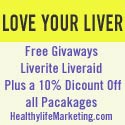

“My Thoughts on Feeding Raw” by Dr. Pitcairn
About 20 years ago, when I began to think for myself about the significance of nutrition in animal health, I realized that animals like dogs and cats in the natural state subsist entirely on raw food. This was enlightening to me. Shortly after that, I read of Dr. Pottenger’s work with cats on raw meat, bones and milk, in which he showed he could duplicate most of the common illness we see in cats clinically by feeding them cooked food. As I cast about for more information. I found much opinion but no veterinarians that had actually tried feeding raw meat to animals. As far as I could tell, they were saying the same thing that was told to me in school— that raw meat would cause disease, parasites and death.
This apparently was not based on any scientific studies. I do not remember when I began to suggest the feeding of raw meat myself but at some point I did. The result was unexpected. I found animals becoming more healthy even without other treatment. Indeed, I have frequently had the report that people find their animals become healthy when they make this change and diseases for which they were hoping to have treatment (on a waiting list) have disappeared. Since that time, other veterinarians have told me similar things about the use of raw meat. I do not have numbers but I think the veterinarians recommending raw meat in the US are in the hundreds. My experience, albeit clinical and not based on studies, is that my patients have improved health on a raw diet. Furthermore, I have not seen significant parasite problems. It may be that the meat sources in this country are especially “clean” but I doubt it. I have read that the typical inspector spends 12 seconds examining a carcass. My thought at present is that dogs and cats, being carnivores by nature, are meant to eat raw meat and do not have a problem doing so. I readily admit the limitation of not doing statistical studies or careful evaluations, in terms of parasites, of these animals. However, I do feel the actual experience of recommending this feeding practice for 20 years does offer some evidence of the usefulness and safety of this practice.
Should the diet by entirely raw meat? No, wild carnivore diets include the bones and organs as well as other parts of the body. Meat is too limited as a food source. We can make up for some of this deficiency by drawing on grains and vegetables and other supplements to make a diet sufficiently balanced.
What about feeding just meat and bones? This is close to what is natural but not entirely. The wild animal also eats organs, skin, connective tissue and other parts. When we buy meat at a market and feed it raw, this is close but by no means is the meat fresh. It has been “aged” in a cooler for many days before shipping and then, of course, shipped to a market where it is sold. In addition it is not organic. Yes, organic meat (or “free-range, pesticide free”) is available but unless the cattle, sheep or other animals are fed organic grains and hay then of course any contaminants in those food sources will end up in the tissues of the animals. So we have to consider the “toxic load” of a high meat diet as meat animals (as a food source) concentrate the contaminants (even deliberately added chemicals like hormones and anti-parasite drugs). The more your dog or cat eats meat the higher the toxins absorbed.
A further complication is feeding raw bones (or cooked, makes no difference) because of the high lead and other heavy metal content. The chief concern is with lead, mercury, & cadmium—all poisonous metals. Lead is the chief problem as decades of driving automobiles using leaded gasoline spewed the element lead into our environment all over the country. It is in the soil and water and taken up by plants and eventually deposited in the bones of animals (cattle, sheep, etc.) that eat plants as their food. It will take centuries for the lead to work itself out of the soil and end up in the sea. Therefore, feeding large quantities of bones will expose your pet to high lead levels. This is the reason for using a calcium supplement as described in our discussion on calcium supplements. If the supplement is from bones, they are from animals that did not grow up in the US where lead is high. For more discussion of this topic, see my book, edition 3, in which there are specific recipes you can use to prepare a natural diet using raw meat but supplemented with safe calcium sources.
In summary, raw meat is an excellent food for dogs and cats in my opinion. However, a complete and balanced diet is necessary. Just meat cannot be fed without eventual problems.
www.drpitcairn.com
















